September is the perfect month for cool-climate gardeners to plant fresh vegetables. The weather is mild, and the soil is still warm enough for seeds to germinate. Many leafy greens, root crops, and overwintering vegetables thrive in this season. In this guide, we’ll share the 11 best vegetables to grow in September in cool climate countries with step-by-step care tips, disease protection, health benefits, and everyday uses. Whether you are a beginner or an experienced gardener, these vegetables will reward you with a healthy harvest.
1. Lettuce
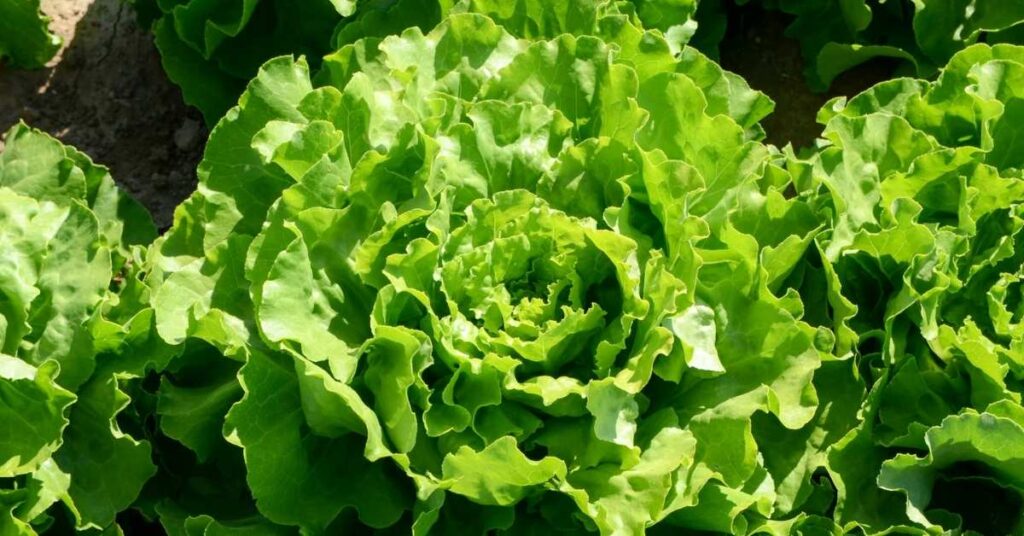
Lettuce is one of the best vegetables to grow in September for cool climates. Its tender, crisp leaves thrive in cooler weather, making it perfect for fresh autumn salads. With fast growth and minimal care, it’s ideal for beginner gardeners looking for quick results.
Lettuce is an easy and fast-growing vegetable that thrives well in September. Similarly, if you are planning to grow tomatoes, choosing the right companion plants is equally important. You can read more about it in my article on Tomato Companion Plants
Lettuce – Crisp and Tender Leaves for Autumn
When growing lettuce, one of the best vegetables to grow in September, soil and care are key:
- Loose, well-draining soil keeps roots healthy.
- Rich in organic matter for faster, nutrient-rich growth.
- Slightly acidic to neutral pH (6.0–7.0) helps nutrient absorption.
- Keep soil consistently moist but not waterlogged.
- Cooler soil temperatures prevent leaves from turning bitter.
Watering Tips
- Keep soil consistently moist; lettuce has shallow roots and dries quickly.
- Avoid waterlogging to prevent root rot and fungal problems.
- Water early in the day to reduce evaporation and leaf disease.
- Use gentle watering methods like drip irrigation or a watering can.
Care Tips
When growing lettuce, one of the best vegetables to grow in September, proper care ensures crisp, healthy leaves:
- Thin seedlings to avoid overcrowding and allow room to grow.
- Apply mulch to retain soil moisture and reduce weeds.
- Use balanced, nitrogen-rich fertilizer for leafy growth.
- Watch for pests like slugs, snails, and aphids, and remove them naturally.
Diseases and Treatment
Lettuce, one of the best vegetables to grow in September, is often affected by leaf rot or small pests that can damage the plant.
- Downy Mildew: Yellow spots and white fuzzy growth on leaves. Treatment: Remove affected leaves, ensure airflow, and use mild fungicide if needed.
- Lettuce Mosaic Virus: Stunted growth and mottled leaves. Treatment: Use disease-free seeds and resistant varieties.
- Bottom Rot: Brown rot at the base of leaves. Treatment: Improve drainage and avoid overwatering.
- Slime Mold: Gray or black patches in wet conditions. Treatment: Remove affected leaves and increase ventilation.
- Aphids: Small insects sucking sap. Treatment: Spray neem oil or use natural insect control.
Benefits
- Packed with Vitamins: Rich in A, C, and K to keep your body healthy.
- Low in Calories: Ideal for salads and light meals.
- Supports Digestion: High water content and fiber aid digestion.
- Quick Harvest: Grows fast, giving fresh leaves in a few weeks.
Fresh & Crunchy
- Make fresh autumn salads with crisp lettuce, one of the best vegetables to grow in September.
- Add to sandwiches or wraps for a crunchy bite.
- Blend into green smoothies for a healthy boost.
- Use as a garnish for soups or main dishes
2. Spinach

Spinach is a cold-tolerant leafy green and another top choice among the best vegetables to grow in September. Packed with vitamins and minerals, it grows quickly in cooler soil, giving you a steady supply before the first frost.
Spinach – Nutritious Greens That Thrive in Cool Soil
Spinach is another best vegetable to grow in September:
- Prefers loose, fertile soil with good drainage.
- High organic matter boosts leaf production.
- Soil pH between 6.0–7.5 is ideal.
- Maintain consistent moisture to avoid tough leaves.
- Cooler soil slows bolting and encourages tender leaves.
Watering Tips
- Keep soil evenly moist to encourage fast, tender growth.
- Avoid soggy soil, which can cause root rot or fungal issues.
- Water in the morning so leaves dry before evening.
- Use gentle watering to avoid damaging delicate leaves.
Care Tips
- Thin seedlings for proper air circulation.
- Mulch to keep soil moist and cool.
- Fertilize lightly with nitrogen-rich compost.
- Remove pests like aphids or caterpillars regularly.
Diseases and Treatment
Spinach, included in the best vegetables to grow in September, can sometimes suffer from white spots or yellowing leaves caused by common diseases.:
- Downy Mildew: Yellow spots on leaves. Treatment: Remove infected leaves, improve airflow.
- White Rust: White pustules on leaf undersides. Treatment: Remove affected leaves and avoid overhead watering.
- Fusarium Wilt: Plants wilt and turn yellow. Treatment: Rotate crops and use resistant varieties.
- Aphids: Sap-sucking insects. Treatment: Neem oil or natural sprays.
Benefits
- High in Iron and Calcium: Supports strong bones and healthy blood.
- Antioxidant-Rich: Boosts immunity and overall wellness.
- Aids Digestion: Fiber keeps your digestive system smooth.
- Fast Growing: Perfect for autumn gardens with a quick harvest.
Nutritious & Tender
- Stir into soups or stews, a healthy way to enjoy one of the best vegetables to grow in September.
- Prepare spinach salads with nuts and cheese.
- Cook as a side dish with garlic and olive oil.
- Blend into smoothies for added vitamins.
3. Radish
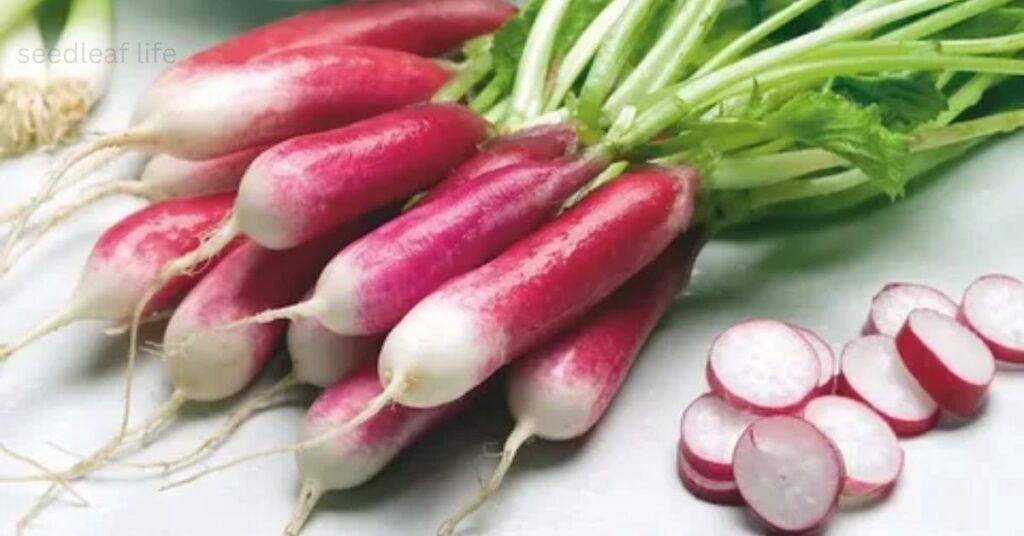
Radishes are fast-growing root vegetables that flourish in cool September weather. They’re ready to harvest in just a few weeks, making them perfect for gardeners eager for quick results. Crisp and spicy, radishes add color and flavor to salads and dishes.
Radish – Quick-Growing Roots for Fresh Salads
Radishes thrive as one of the best vegetables to grow in September:
- Loose, sandy or loamy soil for straight, smooth roots.
- Fertile soil with compost helps rapid growth.
- Slightly acidic to neutral soil (6.0–7.0).
- Keep soil evenly moist for quick root development.
- Avoid heavy clay soil to prevent misshaped roots.
Watering Tips
- Maintain consistently moist soil for fast root development.
- Avoid overwatering, which can make roots soft or split.
- Water early in the day for better absorption.
- Gentle watering prevents soil displacement around young roots.
Care Tips
- Keep rows thinned so roots grow straight.
- Mulch to maintain consistent moisture.
- Fertilize lightly for quick growth.
- Watch for pests like flea beetles and remove them.
Diseases and Treatment
Radish, one of the best vegetables to grow in September, may develop root rot or dark patches on leaves if proper care is not taken.
- Clubroot: Swollen, distorted roots. Treatment: Rotate crops and lime the soil.
- Downy Mildew: Yellow patches and fuzzy growth. Treatment: Remove affected plants and improve airflow.
- Black Rot: Dark veins on leaves. Treatment: Remove infected leaves and ensure proper spacing.
- Aphids: Tiny insects on leaves. Treatment: Spray neem oil or water jets.
Benefits
- Detox Support: Helps liver and kidney function naturally.
- Vitamin C-Rich: Strengthens immunity.
- Good for Digestion: Fiber promotes healthy digestion.
- Quick Harvest: Fast-growing, giving fresh roots in weeks.
Quick & Crunchy
- Slice into fresh salads for a spicy crunch, perfect among the best vegetables to grow in September.
- Add to sandwiches or tacos for extra flavor.
- Pickle for long-lasting use.
- Roast with other root vegetables for autumn meals.
4. Carrot
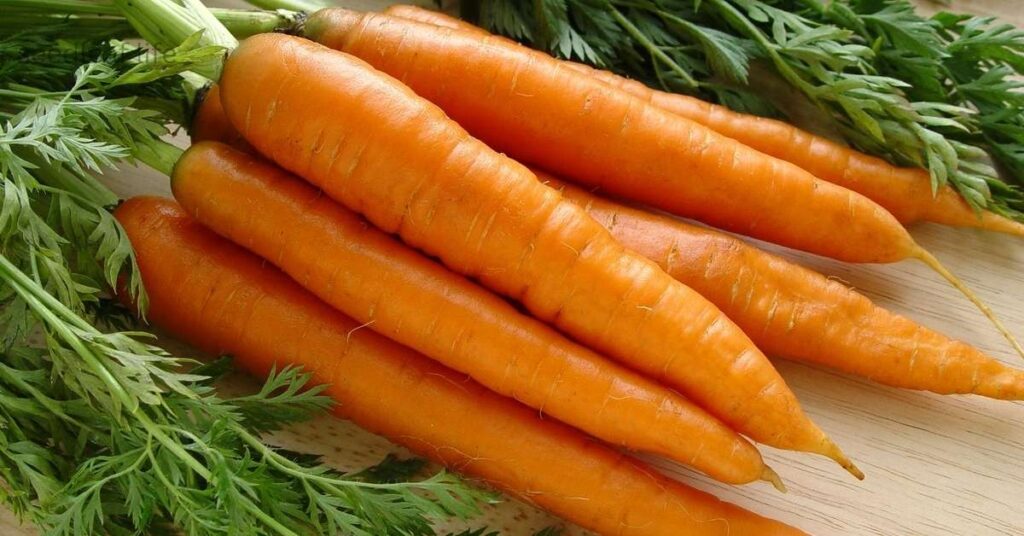
Carrots are hardy root vegetables that thrive when planted in September’s cooler soil. They are one of the best vegetables to grow in September for a sweet, crunchy autumn harvest. Regular watering and loose soil help produce large, healthy roots.
Carrot – Sweet and Crunchy Roots for Autumn Harvest
Carrots are hardy and one of the best vegetables to grow in September:
- Deep, loose soil allows long roots to grow straight.
- Enrich soil with compost to enhance sweetness.
- Neutral pH (6.0–7.0) for healthy root development.
- Consistent moisture prevents cracking.
- Remove stones and clumps to avoid forked roots.
Watering Tips
- Keep soil evenly moist to encourage sweet, straight roots.
- Avoid waterlogging to prevent rotting.
- Water in the morning to reduce fungal growth.
- Use a gentle sprinkle or drip irrigation to avoid disturbing the soil.
Care Tips
- Thin seedlings to avoid overcrowding.
- Mulch to retain moisture and prevent cracking.
- Fertilize with compost for sweet roots.
- Remove weeds and pests regularly.
Diseases and Treatment
Carrot, considered one of the best vegetables to grow in September, is prone to root rot and small leaf spots that can affect healthy growth.
- Alternaria Leaf Blight: Dark spots on leaves. Treatment: Remove infected leaves and apply fungicide if needed.
- Root-Knot Nematodes: Knobby, deformed roots. Treatment: Rotate crops and use nematode-resistant varieties.
- Cavity Spot: Small sunken lesions on roots. Treatment: Keep soil pH slightly above 6.5 and avoid water stress.
- Aphids: Can transmit viruses. Treatment: Neem oil or insecticidal soap
Benefits
- Eye Health: Rich in beta-carotene for better vision.
- Boosts Immunity: Contains vitamins A and C.
- Supports Digestion: Fiber aids smooth digestion.
- Fast Growing: Enjoy fresh, sweet roots in just a few weeks.
Sweet & Nutritious
- Eat raw as snacks or in salads, one of the best vegetables to grow in September.
- Juice or blend into smoothies for natural sweetness.
- Bake into cakes or muffins for dessert.
- Roast or steam as a side dish.
5. Beetroot

Beetroot is ideal for autumn planting and one of the best vegetables to grow in September in cooler climates. Both the roots and leafy tops are edible and nutritious, making it a versatile addition to your garden.
Beetroot – Vibrant Roots and Leaves Packed with Nutrients
Beetroot is a versatile best vegetable to grow in September:
- Loamy, well-drained soil encourages healthy roots.
- Organic matter helps produce large, tender beets.
- Soil pH 6.0–7.0 supports nutrient absorption.
- Keep soil evenly moist for smooth, round roots.
- Cooler soil ensures sweeter taste and better growth.
Watering Tips
- Keep soil consistently moist for smooth, round roots.
- Avoid overwatering to prevent fungal issues.
- Morning watering is best for nutrient absorption.
- Use gentle watering to protect tender leaves.
Care Tips
- Thin seedlings for healthy root development.
- Mulch to keep soil cool and moist.
- Fertilize with balanced compost.
- Watch for leaf miners and remove affected leaves.
Diseases and Treatment
Beetroot, one of the best vegetables to grow in September, can be affected by leaf spot or softening of roots during wet or humid conditions.
- Leaf Spot: Small brown or black spots on leaves. Treatment: Remove affected leaves and improve airflow.
- Downy Mildew: Yellow patches with fuzzy undersides. Treatment: Fungicide and proper spacing.
- Root Rot: Soft roots due to overwatering. Treatment: Ensure well-draining soil.
- Aphids: Sap-sucking insects. Treatment: Neem oil or natural sprays.
Benefits
- Heart Health: Nitrates improve blood circulation.
- Packed with Antioxidants: Helps fight free radicals.
- Supports Digestion: Fiber and nutrients help gut health.
- Quick Harvest: Perfect for autumn gardens, grows fast.
Vibrant & Healthy
- Roast or boil roots for salads, a nutritious choice among the best vegetables to grow in September.
- Juice with fruits and vegetables for a vibrant drink.
- Add leaves to sautés or soups.
- Pickle roots for extended shelf life.
6. Broccoli
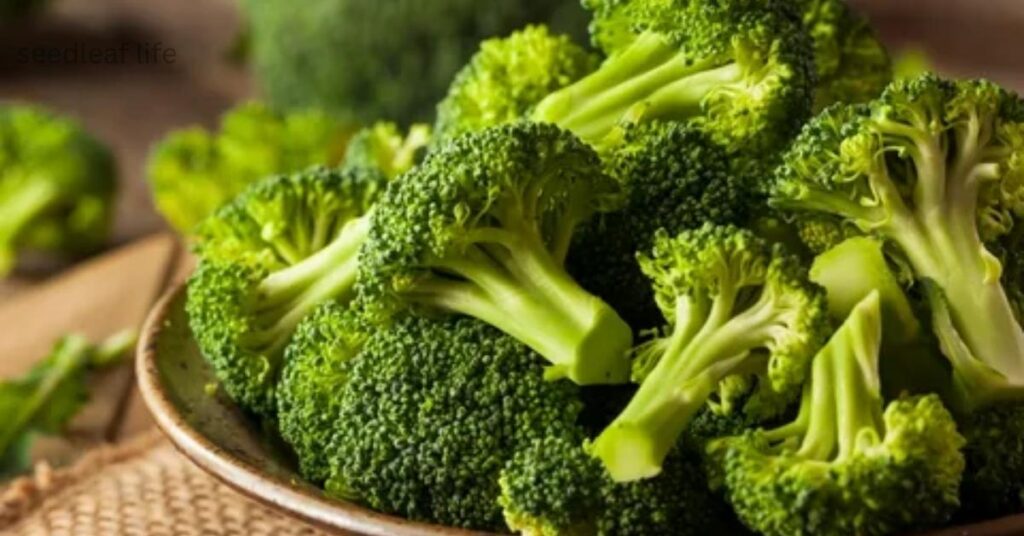
Broccoli prefers cooler temperatures, making September the perfect time to sow. This nutrient-rich vegetable develops crisp, tight heads and grows well in frost-free conditions. Broccoli is a must-have for gardens aiming for healthy autumn produce.
Broccoli – Crisp Florets Perfect for Cool Seasons
Broccoli prefers cooler temperatures, making it one of the best vegetables to grow in September:
- Fertile, well-draining soil with added compost.
- Soil rich in nitrogen for strong leafy growth.
- pH 6.0–7.0 is ideal for healthy heads.
- Consistently moist soil encourages crisp, dense florets.
- Cooler soil prevents premature flowering.
Watering Tips
- Maintain even soil moisture to support crisp, dense heads.
- Avoid soggy soil that can cause root or crown rot.
- Water early to allow foliage to dry before evening.
- Gentle watering prevents soil compaction around roots.
Care Tips
- Space plants properly to allow good airflow.
- Mulch to maintain soil moisture and reduce weeds.
- Fertilize with nitrogen-rich compost for strong leaves.
- Keep an eye on pests like cabbage worms.
Diseases and Treatment
Broccoli, included in the best vegetables to grow in September, may face fungal spots on leaves or root rot if soil is too wet.
- Broccoli, included in the best vegetables to grow in September, may face fungal spots on leaves or root rot if soil is too wet.
- Downy Mildew: Yellowing leaves with fuzzy growth. Treatment: Remove affected leaves, improve airflow.
- Clubroot: Swollen roots causing wilting. Treatment: Rotate crops and lime soil.
- Black Rot: Yellow V-shaped leaf lesions. Treatment: Remove infected leaves and maintain proper spacing.
- Cabbage Worms: Eat leaves and damage heads. Treatment: Handpick worms or use organic sprays.
Benefits
- Rich in Vitamins: C, K, and folate support immunity and bones.
- Anti-Inflammatory: Contains antioxidants that reduce inflammation.
- Supports Digestion: High fiber content aids gut health.
- Cold-Tolerant: Thrives in cooler weather with quick growth.
Crisp & Nutritious
- Steam or stir-fry florets, one of the best vegetables to grow in September.
- Add to pasta or rice dishes for extra nutrition.
- Roast with olive oil and herbs as a side.
- Blend into creamy soups for a healthy meal.
7. Cauliflower
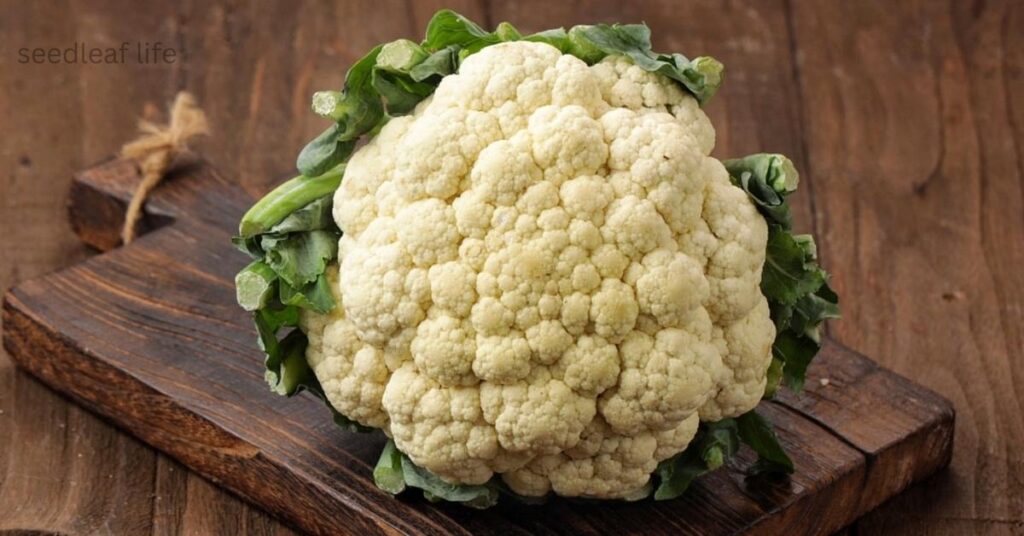
Cauliflower thrives in cool, frost-free September weather and is considered one of the best vegetables to grow in September. With proper care, it forms large, white heads ready for roasting, steaming, or salads.
Cauliflower – Firm White Heads for Autumn Dishes
Cauliflower is another best vegetable to grow in September.
- Rich, well-draining soil for firm head formation.
- Fertilized soil boosts growth and size.
- Slightly acidic to neutral pH (6.0–7.0).
- Keep soil evenly moist to prevent heads from cracking.
- Cooler soil supports better flavor and texture.
Watering Tips
- Keep soil evenly moist for firm head formation.
- Avoid overwatering to prevent cracking or rot.
- Morning watering reduces disease risks.
- Use gentle methods to avoid disturbing the developing heads.
Care Tips
- Space plants for proper head development.
- Mulch to keep soil moist and cool.
- Fertilize regularly for healthy growth.
- Remove pests like aphids or caterpillars promptly.
Diseases and Treatment
Cauliflower, one of the best vegetables to grow in September, can develop white patches on leaves or yellowing due to common fungal diseases.
- Downy Mildew: White fuzzy growth on leaves. Treatment: Remove affected leaves and apply fungicide.
- Black Rot: Yellow veins and black edges on leaves. Treatment: Remove infected parts and rotate crops.
- Clubroot: Causes wilting and swollen roots. Treatment: Use disease-free soil and crop rotation.
- Cabbage Worms: Leaf-eating pests. Treatment: Handpick or use neem oil.
Benefits
- Vitamin C-Rich: Boosts immunity.
- Low in Calories: Ideal for weight-conscious diets.
- Supports Digestion: Fiber helps maintain a healthy gut.
- Quick Growing: Thrives in cool weather and gives tender heads.
Firm & Flavorful
- Roast or steam heads for autumn dinners, perfect among the best vegetables to grow in September.
- Mash as a low-carb alternative to potatoes.
- Add to curries or stir-fries.
- Use florets for vegetable-based pizza toppings.
8. Kale
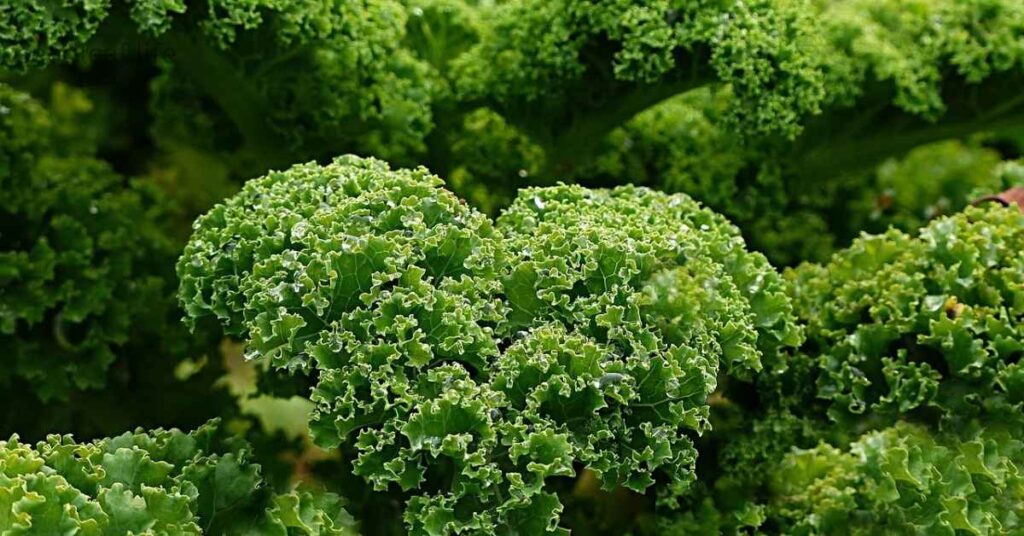
Kale is extremely cold-hardy and perfect for September planting. Its leafy greens pack powerful nutrients and taste even sweeter after a light frost. Kale is versatile in the kitchen and a great addition to your cool-season garden.
Kale – Hardy Greens That Get Sweeter After Frost
- Fertile, well-draining soil encourages strong leaves.
- Add compost for continuous nutrient supply.
- Neutral pH (6.0–7.0) for optimal growth.
- Maintain even moisture for tender, leafy greens.
- Cooler soil prevents bolting and enhances flavor.
Watering Tips
- Maintain consistent soil moisture for tender leafy greens.
- Avoid waterlogged soil that can lead to root rot.
- Water in the morning to reduce leaf diseases.
- Gentle watering prevents soil splash onto leaves.
Care Tips
- Thin seedlings to give leaves space.
- Mulch to retain moisture and prevent weeds.
- Fertilize with nitrogen-rich compost for tender leaves.
- Watch for pests and remove them naturally.
Diseases and Treatment
Kale, considered one of the best vegetables to grow in September, may suffer from pests or fungal spots that damage the leaves.
- Downy Mildew: Yellow spots on leaves. Treatment: Remove infected leaves and improve airflow.
- Black Rot: Dark veins and leaf decay. Treatment: Remove infected leaves, rotate crops.
- Aphids: Sap-sucking insects on leaves. Treatment: Spray neem oil or water jets.
- Flea Beetles: Small holes in leaves. Treatment: Row covers or organic insecticide.
Benefits
- Loaded with Vitamins: Rich in A, C, and K for overall health.
- High in Antioxidants: Protects against diseases.
- Supports Digestion: Fiber keeps your digestive system smooth.
- Cold-Hardy: Can grow well in cooler autumn temperatures.
Hardy & Nutritious
- Make fresh kale salads, one of the best vegetables to grow in September.
- Saute with garlic as a nutritious side dish.
- Blend into smoothies or soups for vitamins.
- Bake into crispy kale chips for a healthy snack.
9. Cabbage

Cabbage grows best when planted in late summer or early September and is one of the best vegetables to grow in September. Cool weather helps form firm, dense heads ideal for salads, slaws, and cooked dishes.
Cabbage – Dense Heads Ideal for Cool Weather
Cabbage grows best when planted in late summer or early September and is one of the best vegetables to grow in September:
- Loose, fertile soil promotes dense head formation.
- Compost-enriched soil gives steady nutrients.
- Slightly acidic to neutral pH (6.0–7.0).
- Keep soil moist but avoid waterlogging.
- Cooler soil encourages crisp, firm heads.
Watering Tips
- Keep soil evenly moist for firm head development.
- Avoid overwatering to prevent rot and disease.
- Morning watering helps leaves stay dry and healthy.
- Use gentle watering to avoid washing away soil.
Care Tips
- Space seedlings for dense, firm heads.
- Mulch to keep soil moist and cool.
- Fertilize with compost or balanced fertilizer.
- Keep an eye on pests like cabbage worms or aphids.
Diseases and Treatment
Cabbage, one of the best vegetables to grow in September, can be affected by black rot on leaves or root problems caused by poor drainage.
- Black Rot: Yellowing leaf edges. Treatment: Remove infected leaves and maintain spacing.
- Downy Mildew: Fuzzy growth on undersides of leaves. Treatment: Improve airflow and remove affected leaves.
- Clubroot: Swollen roots causing wilting. Treatment: Crop rotation and lime soil.
- Cabbage Worms: Eat leaves. Treatment: Handpick or use neem oil.
Benefits
- Immune Support: High in vitamin C.
- Digestive Health: Fiber improves gut function.
- Anti-Inflammatory: Contains compounds that reduce inflammation.
- Thrives in Cool Weather: Perfect for autumn harvest.
Dense & Crisp
- Make slaws or salads using crisp cabbage, ideal among the best vegetables to grow in September.
- Cook in soups or stir-fries for added flavor.
- Ferment to prepare sauerkraut or kimchi.
- Steam or boil as a simple side dish.
10. Turnip

Turnips thrive in cool weather and are among the best vegetables to grow in September. Both the roots and leafy tops are edible and versatile, making them a simple and productive crop for autumn gardens.
Turnip – Versatile Roots and Leaves for Autumn
Turnips are easy and one of the best vegetables to grow in September:
- Loamy, well-drained soil for smooth roots.
- Enrich soil with organic matter for better growth.
- Soil pH 6.0–7.5 is ideal.
- Keep soil consistently moist for tender roots.
- Cooler soil prevents leaves from becoming bitter.
Watering Tips
- Maintain consistent moisture for smooth roots and tender greens.
- Avoid waterlogging to prevent root rot.
- Morning watering helps prevent fungal issues.
- Use gentle watering to protect young roots.
Care Tips
- Thin seedlings for proper root development.
- Mulch to maintain soil moisture.
- Fertilize lightly for smooth roots.
- Watch for pests and remove them promptly.
Diseases and Treatment
Turnip, included in the best vegetables to grow in September, is prone to root rot and white patches on leaves during damp conditions.
- Downy Mildew: Yellow spots and white fuzz. Treatment: Remove affected leaves and improve airflow.
- Clubroot: Swollen roots and stunted growth. Treatment: Rotate crops and lime soil.
- Flea Beetles: Tiny holes on leaves. Treatment: Row covers or organic insecticide.
- Aphids: Sap-sucking insects. Treatment: Spray neem oil or natural control.
Benefits
- Low in Calories: Ideal for healthy diets.
Rich in Vitamins: Supports overall health.
Good for Digestion: Fiber helps keep digestion smooth.
Quick Harvest: Grows fast in cool climates for autumn.
Versatile & Healthy
- Roast or mash roots, one of the best vegetables to grow in September.
- Add leaves to soups and stews.
- Pickle roots for long-term storage.
- Stir into casseroles or mixed vegetable dishes
11. Peas
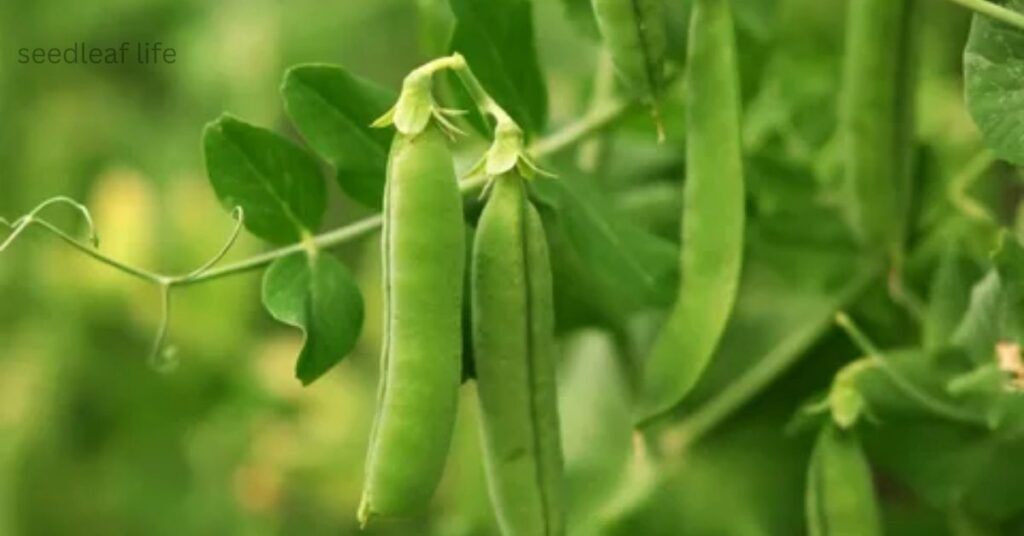
Peas are one of the best vegetables to grow in September in cooler climates. They grow quickly, producing fresh, sweet pods for your autumn harvest. Using a trellis helps support the climbing vines, making them an ideal choice for home gardeners looking for healthy, seasonal produce.
Peas – Sweet Pods That Love Cooler Soil
Peas are perfect as one of the best vegetables to grow in September
- Loose, fertile soil for strong root development.
- Add compost to encourage sweet, tender pods.
- Neutral pH (6.0–7.5) supports healthy growth.
- Maintain consistent moisture for fast growth.
- Cooler soil helps delay bolting and improves yield.
Watering Tips
- Keep soil consistently moist for strong growth and sweet pods.
- Avoid soggy soil that can cause root rot.
- Water in the morning to allow leaves to dry before evening.
- Gentle watering prevents damage to climbing vines and soil.
Care Tips
- Provide support with a trellis or sticks for climbing.
- Mulch around the base to keep soil moist.
- Fertilize lightly with compost.
- Remove pests like aphids to protect tender pods.
Diseases and Treatment
Peas, one of the best vegetables to grow in September, can develop powdery mildew or root rot if proper care is not taken.
- Powdery Mildew: White powdery coating on leaves. Treatment: Remove affected leaves and apply fungicide if needed.
Root Rot: Wilting plants due to soggy soil. Treatment: Ensure well-draining soil.
Aphids: Can damage pods and transmit viruses. Treatment: Neem oil or natural sprays.
Pea Weevils: Eat leaves and pods. Treatment: Handpick or use organic insecticides.
Benefits
- High in Protein: Great for plant-based diets.
- Immune Boosting: Rich in vitamins and minerals.
- Supports Digestion: Fiber keeps gut healthy.
- Fast-Growing: Perfect for autumn home gardens with fresh pods quickly.
Sweet & Tender
- Add fresh peas to salads, perfect among the best vegetables to grow in September.
- Cook in soups, stews, or risottos.
- Stir into pasta or rice dishes for sweetness.
- Use in spring rolls or wraps for a crunchy bite.
Conclusion
September is the perfect time to enjoy gardening in cool climates. The weather is mild, and the soil is just right for planting. From quick growers like lettuce and radish to healthy options like broccoli, kale, and peas, there are many vegetables to grow in September that will give you fresh, tasty, and nutritious harvests.
With a little care, regular watering, and protection from pests, these vegetables will reward you with healthy meals and a colorful autumn garden. Whether you are new to gardening or already experienced, planting best vegetables to grow in September is a smart way to enjoy fresh food straight from your garden.
For additional planting tips, check Gardening Know How


One response to “11 Best Vegetables to Grow in September in Cool Climate Countries”
[…] If you’re also curious about seasonal gardening, check out our Guide to Vegetables You Can Grow in September […]